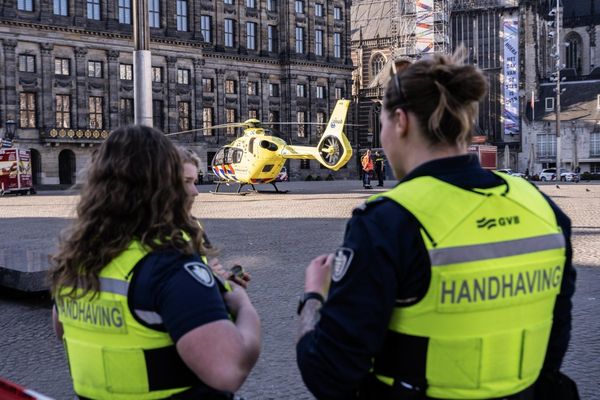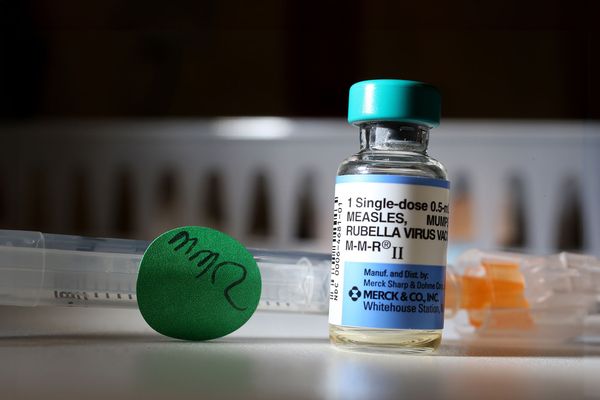
The start of the Saturday sprint event at Spa was delayed by rain, and when it eventually got underway the cars ran on full wet tyres behind the safety car – as mandated by the rules – before the field was released.
Half the cars then came straight in for intermediates, with the rest following suit at the end of the first flying lap. It was only double stacking and pitlane traffic considerations that stopped everyone from coming in straight away.
Drivers were quick to point out afterwards that the full wet tyre is “pointless”, as GPDA director George Russell described it, with Spa demonstrating once again the catch-22 is that if it’s raining hard enough for the wet to be required, then visibility issues mean that the cars cannot run at racing speeds.
The discussion prompted Pirelli to tout an idea it had been pondering for a while of ditching the full wets and instead having a single "super intermediate" that would work across all wet conditions - in effect allowing drivers to go from safety car running to racing with the same tyre.
Over its stint in the sport, Pirelli has been obliged to put a huge effort into wets and intermediates. One useful recent development has been the move to blanket-free wets, first raced in Monaco, and which will be joined by intermediates in 2024.
"I believe that we have to first of all to divide two problems,” said Pirelli F1 boss Mario Isola. “One is the performance of the wet. One is the visibility. Performance-wise, what I can tell you is that when we were developing the [blanket-free] tyres, we found a result in terms of performance that was much, much better than the old wet tyre.
“It's not enough, maybe, but we did a step. In Fiorano and Paul Ricard, we found them [to be] five, six seconds quicker than the old wet, in cold conditions, because the main issue was to understand if without blankets they were struggling with the warm-up.

"The point is that maybe this performance is still not enough to generate the right crossover with the intermediate.”
The problem Pirelli always faces with wet and intermediate development is that it relies on tests at artificially soaked tracks.
Thus last week’s heavy rain at Spa for what was supposed to be a dry test with Aston Martin and McLaren was actually a very useful opportunity to gather data and try some experimental tyres.
“One of the issues that we have is that we can test the wet weather tyres only at Paul Ricard and Fiorano - two tracks with completely different characteristics compared to Spa, Silverstone, or other circuits," added Isola.
“We just discovered [after the Spa sprint], because we had the opportunity to compare the intermediate with a wet, that we needed to improve the performance of the wet.
“According to the data that we had from the past, the crossover was around 115-6%, which is the right number for considering the crossover between intermediate and wet.
“That means that with the data collected, we have to work on the performance of the wet tyres in order to achieve the right crossover with intermediates. And that's the first point.

“The second point is are they safety car tyres? We have discussed many times about visibility. Visibility is an issue.
“And clearly the FIA together with the teams are working around some devices that can improve visibility in order to reduce the spray that is coming not only from the tyres but also from the diffuser. And at the moment we didn't find anything that is reducing visibility so much.”
Given that the visibility issue won’t be addressed any time soon the single wet tyre idea starts to make sense.
"If for the future the idea is to stay with the current situation, that means if there is a lot of water on the track, red flag or safety car, and they are not going to run because of visibility, then, in my opinion, the best solution is probably to develop an intermediate tyre, let's call it super-intermediate or intermediate-plus or whatever name you want to use, that is an intermediate that is more towards a wet condition.
“So we can cover with one product from the limit that is acceptable for visibility, to the crossover with dry conditions.
“If the idea is to continue to look for a device that is able to reduce the spray, and therefore give them the possibility to run in full wet conditions, we have to keep the two products, and stay with the intermediate that we have now, and the new intermediate that is running without blankets, and improve the full wet tyre.
“But if the full wet tyre is used only behind the safety car, I agree with drivers that at the moment it's a useless tyre. We have to decide which is the direction we want to take for the future in order to develop the product that is needed for F1."

Confirming the idea of a "super-intermediate" is something that has been discussed in the past, Isola called on the FIA, F1, the teams and drivers to "decide what we want" for the future.
"We cannot cover every direction, because we have very limited possibilities of testing," he said. "And if we wasted time testing different stuff without a clear direction, the only risk is that we don't achieve any targets.
"So we need to decide what is the direction. Do we want to develop a different tread pattern able to work in a wider condition? Okay, we focus on that and we do that. But obviously, then we are not working on improving the current wet tread pattern.”
If the single wet tyre idea is eventually approved Pirelli will have a lot of development work to do. The timing means that it cannot be readied for the start of 2024, but it could be introduced during the season if all parties agree, and the rules are changed to allow it – which is what happened with blanket-free wets this year.
However, there’s bound to be some resistance to in-season change, especially as having one tyre will have a big impact on the regulations.
If the 2024 window is missed the plan will be pushed back to 2025 – and we still don’t know if the tyre supply contract will go to incumbent Pirelli or challenger Bridgestone.
But Pirelli does at least have a useful starting point for development with a tread pattern having been created when previously considering the idea, although Isola conceded it would take "two months" to create the new moulds before testing of the construction could begin.
Pushing the sustainability aspect of a single wet weather tyre, Isola added: "For me, it's a good idea if it works, if you have only one product for wet conditions.
"At the moment we supply seven sets of tyres, four intermediate and three wets. They will have seven sets of the same tread pattern that they can use anytime during the weekend. And that could be also a good topic for sustainability."







